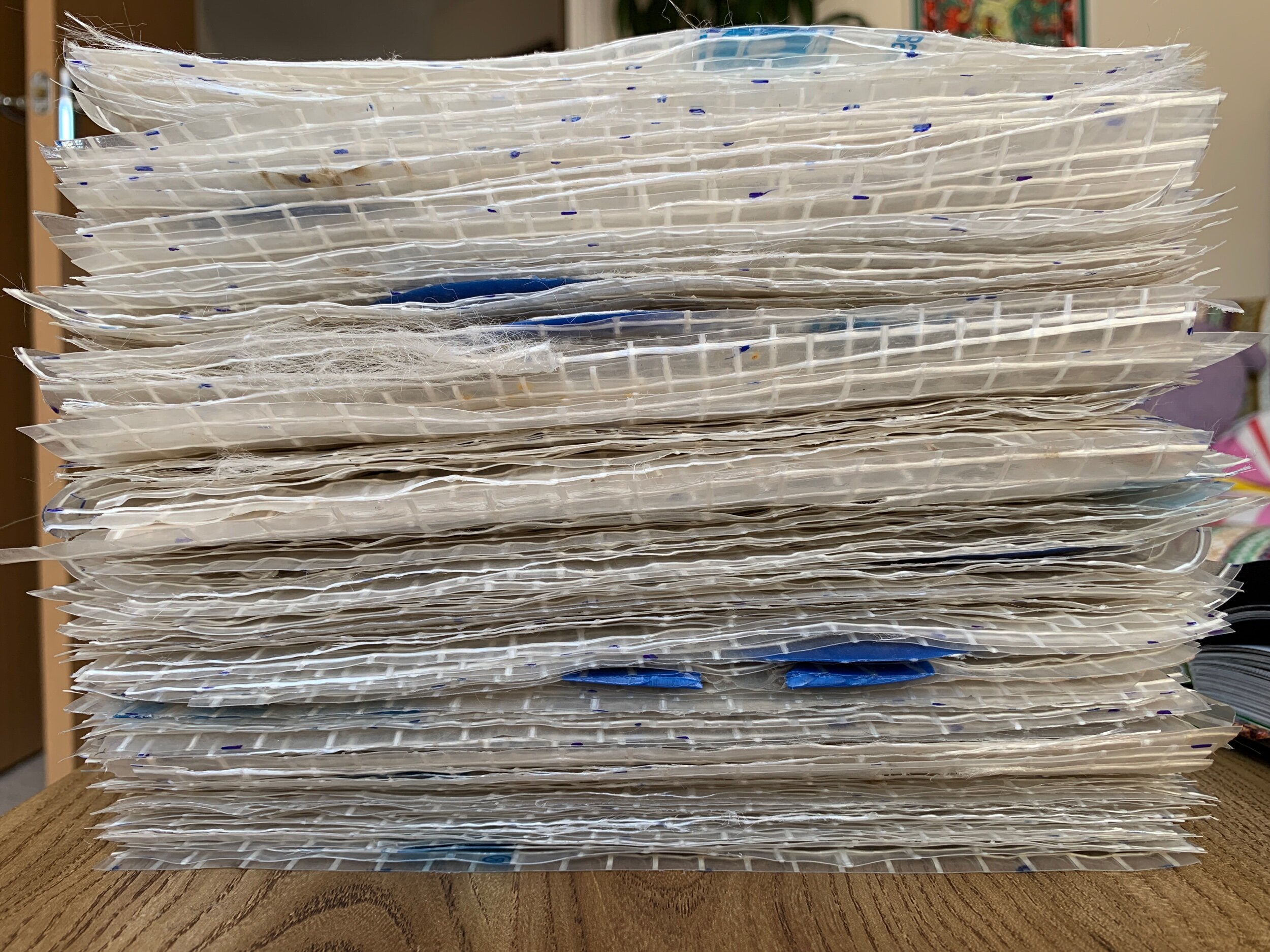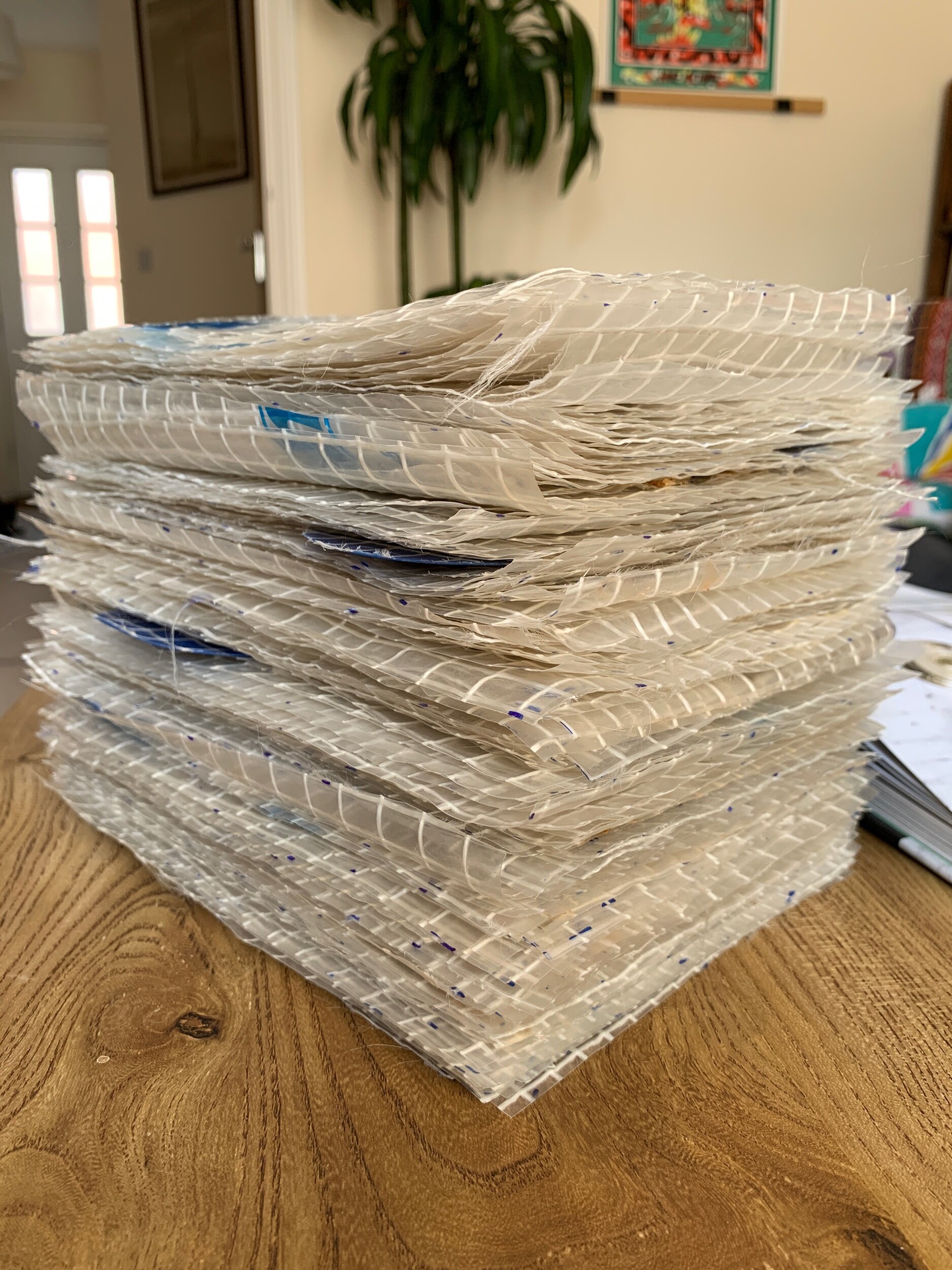CORRESPONDENCE01
CORRESPONDENCE01 is a collaborative project between 10 artists based near the Exeter Phoenix & 10 Artists who are based near Broadway Gallery, Letchworth. We each have a few weeks to make work for each gallery with the constraint of it fitting in an A4 Jiffy envelope. Everyone is paired with an artist from the other gallery to collaborate with, talk to, use for critique or whatever we feel works.
I have been paired with Liz Harrington an artist who works with analogue & alternative photographic processes & camera-less techniques. There is a strong theme of landscape in her work & she often makes artist books & folded paper editions. In our initial conversation we discussed a description of Liz’s practice where she says she responds to the, “…transient nature of environments and traces of the past, finding beauty in the often unseen or overlooked.”
Somehow in this sentence Liz has captured the overlap in our work which became an interesting point for us to explore. Although we aren’t directly collaborating with our work, our conversations are unearthing interesting ideas surrounding the work that we will make. For me it has been very helpful to describe what I plan to make & respond to the questions that Liz poses. One of the main focuses for my work has been our discussion around the ‘Preciousness of printed work’. A topic that has arisen for me this year in other conversations & exhibitions. Liz mentioned that she felt that her, “…recent work has always been something unique, a one-off, and not reproduceable (in a physical form) but I’ve been beginning to question this and it’s accessibility”. This comment reveals a certain direction that Liz’s work might take & has been a catalyst in my own thinking.
Another question that has proved to be crucial to our conversations was how we could make work that fits into the A4 envelope but also expands when not confined. How could we push the boundary of that contained size. As Liz is a keen paper folder & artist book maker this seemed like an interesting route to take as these disciplines create work that naturally expand, this is something she has expressed may be explored. For my work I decided to use plastic sheeting, of which I have lots as it forms an integral part of my practice. Resourcefulness is a constant in my practice, so I explored my envelope to see how much I could fit into it. 100 A5 sheets seemed a good limit for the envelope.
I will be making one set for each gallery adding up to 200 A5 printed sheets in total, thus beginning the subversion of the preciousness of my printed artwork. Usually once printed on, a ‘canvas’ would not normally be stacked & crammed into an envelope. This for me is where the question of ‘reproduction & accessibility’ that Liz mentioned creeps into the making of my work. As I am making such a large volume of prints, reproduction isn’t an issue as there will be a total of 40 of each print between the 2 galleries. However I may decide to send different amounts of each print to each space for exhibition. This would make some prints more rare in one gallery & more abundant in the other, mixing the accessibility of each one. I am also making the prints in a certain way to exhibit them in a stacked form. All of the prints will be shown together but stacked in front of one another. In this way the transparency of the plastic will reveal the layers of the printed surfaces. It will also make the set more sculptural rather than simply wall based. These decisions & making methods will help to reinforce a certain level of subversion that I am beginning to explore.
Liz’s & my work will be shown along side each other, so depending on how her work pans out we may both be showing versions of how printed work can be manipulated & shown in such a way that they feel a lot less traditional.
More writing will follow once the exhibition is open.


